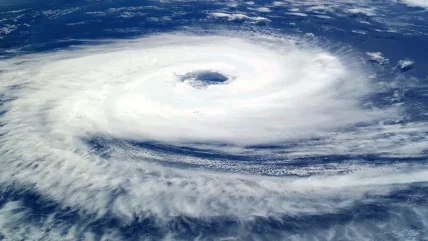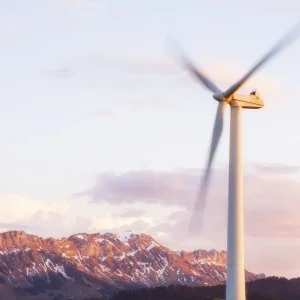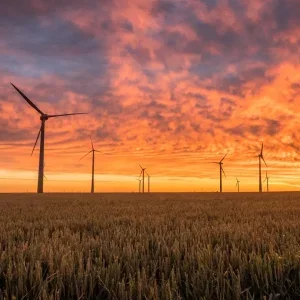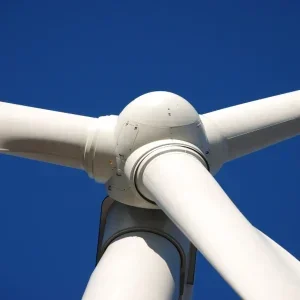
The wind energy industry is a cornerstone of the global transition to renewable energy. As the world increasingly turns to sustainable sources of power, wind energy’s role continues to expand. However, the rising frequency and intensity of extreme weather events pose significant challenges to this sector. This article examines the impact of extreme weather on wind energy, the industry’s response strategies, and future outlooks.
The Growing Importance of Wind Energy
Global Expansion
Wind energy has seen remarkable growth over the past few decades, with installations spreading across the globe. Countries like China, the United States, and Germany lead in total installed capacity, while emerging markets are rapidly developing their wind resources. Wind energy is crucial for reducing carbon emissions and combating climate change.
Benefits of Wind Energy
Wind power offers numerous benefits, including low operational costs, minimal environmental impact, and the potential for decentralised energy production. It contributes to energy security by diversifying energy sources and reducing dependence on fossil fuels.
Impact of Extreme Weather on Wind Energy
Types of Extreme Weather Events
Extreme weather events encompass hurricanes, typhoons, tornadoes, severe storms, heatwaves, cold snaps, and droughts. Each type of event poses unique challenges to wind energy infrastructure.
Physical Damage to Turbines
Hurricanes and typhoons, with their high winds and heavy rains, can cause significant physical damage to wind turbines. Blades can be damaged or destroyed, nacelles can be compromised, and towers can be destabilised. For example, Hurricane Maria in 2017 caused substantial damage to wind farms in Puerto Rico.
Operational Disruptions
Extreme weather can disrupt the operation of wind farms. High winds from storms can force turbines to shut down to prevent damage, leading to temporary losses in power generation. Conversely, heatwaves and cold snaps can affect the performance of turbines and other infrastructure, impacting efficiency and reliability.
Grid Integration Challenges
The intermittent nature of wind power is exacerbated by extreme weather, complicating grid integration. For instance, storms can cause fluctuations in power output, challenging grid stability. Additionally, damage to transmission lines and substations from extreme weather can interrupt the delivery of wind-generated electricity.
Case Studies of Weather-Related Challenges
Hurricane Harvey and Texas Wind Farms
In 2017, Hurricane Harvey caused widespread destruction along the Texas Gulf Coast. While many wind farms in the region were designed to withstand high winds, the hurricane highlighted the vulnerability of related infrastructure, such as transmission lines, which suffered extensive damage. Despite the robust design of the turbines, the disruption in power delivery illustrated the interconnected risks of extreme weather.
European Heatwave and Wind Energy Production
The European heatwave of 2019 demonstrated how extreme temperatures could affect wind energy production. High temperatures led to changes in wind patterns, reducing wind speeds and consequently the efficiency of wind farms. This event underscored the need for adaptable strategies to maintain energy output during fluctuating weather conditions.
Strategies for Mitigating Extreme Weather Risks
Technological Innovations
Advancements in turbine technology are crucial for enhancing resilience against extreme weather. Innovations include the development of more robust materials for blades, advanced anchoring systems for towers, and improved turbine designs that can better withstand high winds and severe weather conditions.
Improved Forecasting and Monitoring
Accurate weather forecasting and real-time monitoring systems are essential for mitigating the impact of extreme weather. By predicting storms and other severe weather events, operators can take preemptive measures, such as shutting down turbines safely and securing equipment. Enhanced monitoring systems also allow for quick response and maintenance post-event.
Strategic Siting and Design
Strategic siting of wind farms can reduce exposure to extreme weather risks. This includes selecting locations less prone to severe weather or using offshore installations where applicable. Additionally, designing wind farms with resilience in mind—such as elevated foundations in flood-prone areas—can mitigate potential damage.
Policy and Regulatory Measures
Strengthening Building Codes and Standards
Governments and regulatory bodies play a pivotal role in ensuring wind energy infrastructure can withstand extreme weather. This involves updating building codes and standards to reflect the latest research and technological advancements, ensuring that new installations are resilient to the anticipated impacts of climate change.
Supporting Research and Development
Policy support for research and development in wind energy technology is critical. Funding for projects that explore new materials, designs, and methods for enhancing the durability and efficiency of wind turbines can drive innovation and resilience in the sector.
Incentivising Resilience Investments
Governments can incentivise investments in resilient wind energy infrastructure through subsidies, tax credits, and other financial mechanisms. These incentives can encourage the industry to adopt best practices and technologies that enhance the resilience of wind farms to extreme weather.
The Role of Wind Energy in Climate Adaptation
Contributing to Energy Security
Wind energy enhances energy security by providing a renewable, locally-sourced power option. This diversification of energy sources reduces dependence on fossil fuels and increases the resilience of the energy supply chain to geopolitical and environmental disruptions.
Supporting Community Resilience
Wind farms can support community resilience by providing stable, sustainable energy sources, particularly in regions vulnerable to extreme weather. Local wind energy projects can offer energy independence and economic benefits, such as job creation and local investment.
Future Outlook
Increasing Resilience Through Innovation
The future of the wind energy industry will be shaped by ongoing innovations aimed at increasing resilience to extreme weather. This includes not only technological advancements but also improvements in operational practices, such as enhanced maintenance protocols and emergency response strategies.
Integrating Renewable Energy with Climate Policies
As climate change continues to drive extreme weather events, integrating wind energy development with broader climate adaptation and mitigation policies will be essential. This holistic approach can ensure that wind energy contributes effectively to global efforts to combat climate change and build resilient energy systems.
Collaboration and Knowledge Sharing
International collaboration and knowledge sharing will be crucial for addressing the challenges posed by extreme weather. Industry stakeholders, governments, and research institutions must work together to share best practices, develop new technologies, and create robust frameworks for resilience.
Conclusion
Extreme weather events present significant challenges to the wind energy industry, affecting physical infrastructure, operational efficiency, and grid integration. However, through technological innovation, strategic planning, and supportive policies, the industry can enhance its resilience and continue to thrive. As the world seeks to mitigate climate change and adapt to its impacts, wind energy will play a vital role in building a sustainable and resilient energy future. By addressing the challenges posed by extreme weather, the wind energy industry can ensure its continued growth and contribution to global energy security and environmental sustainability.






